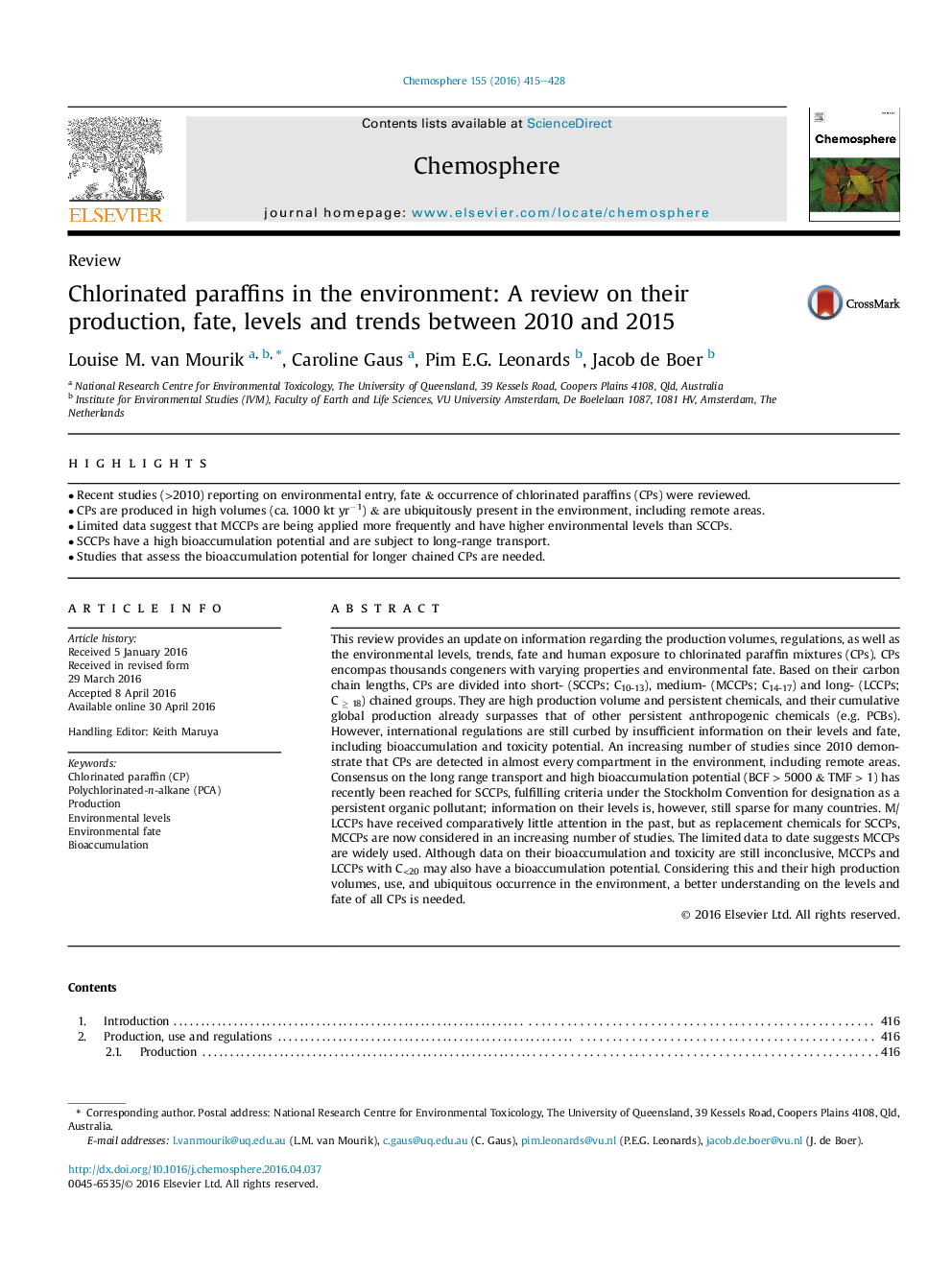| Article ID | Journal | Published Year | Pages | File Type |
|---|---|---|---|---|
| 4407528 | Chemosphere | 2016 | 14 Pages |
•Recent studies (>2010) reporting on environmental entry, fate & occurrence of chlorinated paraffins (CPs) were reviewed.•CPs are produced in high volumes (ca. 1000 kt yr−1) & are ubiquitously present in the environment, including remote areas.•Limited data suggest that MCCPs are being applied more frequently and have higher environmental levels than SCCPs.•SCCPs have a high bioaccumulation potential and are subject to long-range transport.•Studies that assess the bioaccumulation potential for longer chained CPs are needed.
This review provides an update on information regarding the production volumes, regulations, as well as the environmental levels, trends, fate and human exposure to chlorinated paraffin mixtures (CPs). CPs encompas thousands congeners with varying properties and environmental fate. Based on their carbon chain lengths, CPs are divided into short- (SCCPs; C10-13), medium- (MCCPs; C14-17) and long- (LCCPs; C ≥ 18) chained groups. They are high production volume and persistent chemicals, and their cumulative global production already surpasses that of other persistent anthropogenic chemicals (e.g. PCBs). However, international regulations are still curbed by insufficient information on their levels and fate, including bioaccumulation and toxicity potential. An increasing number of studies since 2010 demonstrate that CPs are detected in almost every compartment in the environment, including remote areas. Consensus on the long range transport and high bioaccumulation potential (BCF > 5000 & TMF > 1) has recently been reached for SCCPs, fulfilling criteria under the Stockholm Convention for designation as a persistent organic pollutant; information on their levels is, however, still sparse for many countries. M/LCCPs have received comparatively little attention in the past, but as replacement chemicals for SCCPs, MCCPs are now considered in an increasing number of studies. The limited data to date suggests MCCPs are widely used. Although data on their bioaccumulation and toxicity are still inconclusive, MCCPs and LCCPs with C<20 may also have a bioaccumulation potential. Considering this and their high production volumes, use, and ubiquitous occurrence in the environment, a better understanding on the levels and fate of all CPs is needed.
